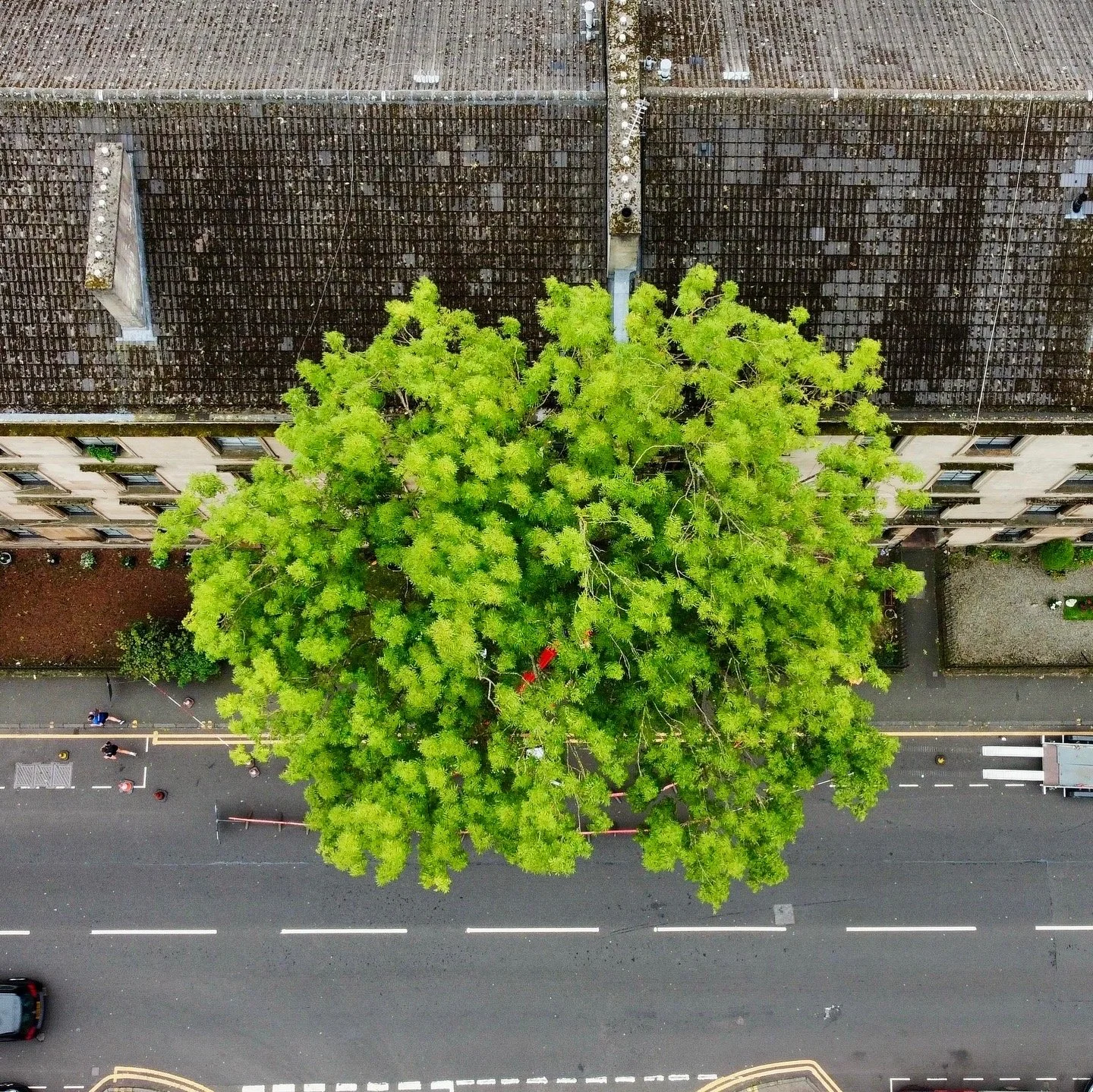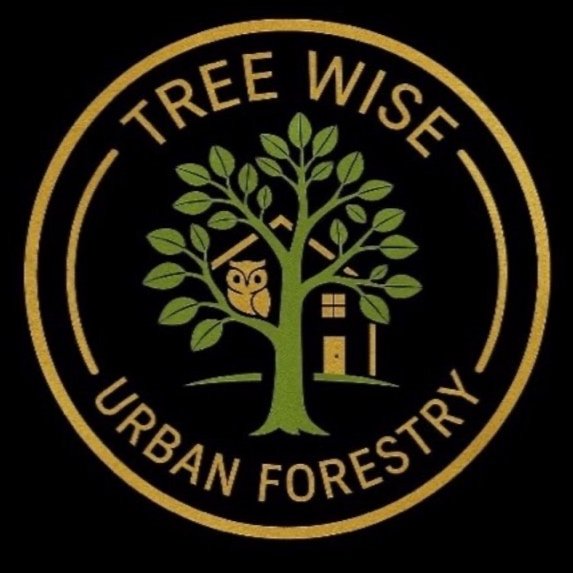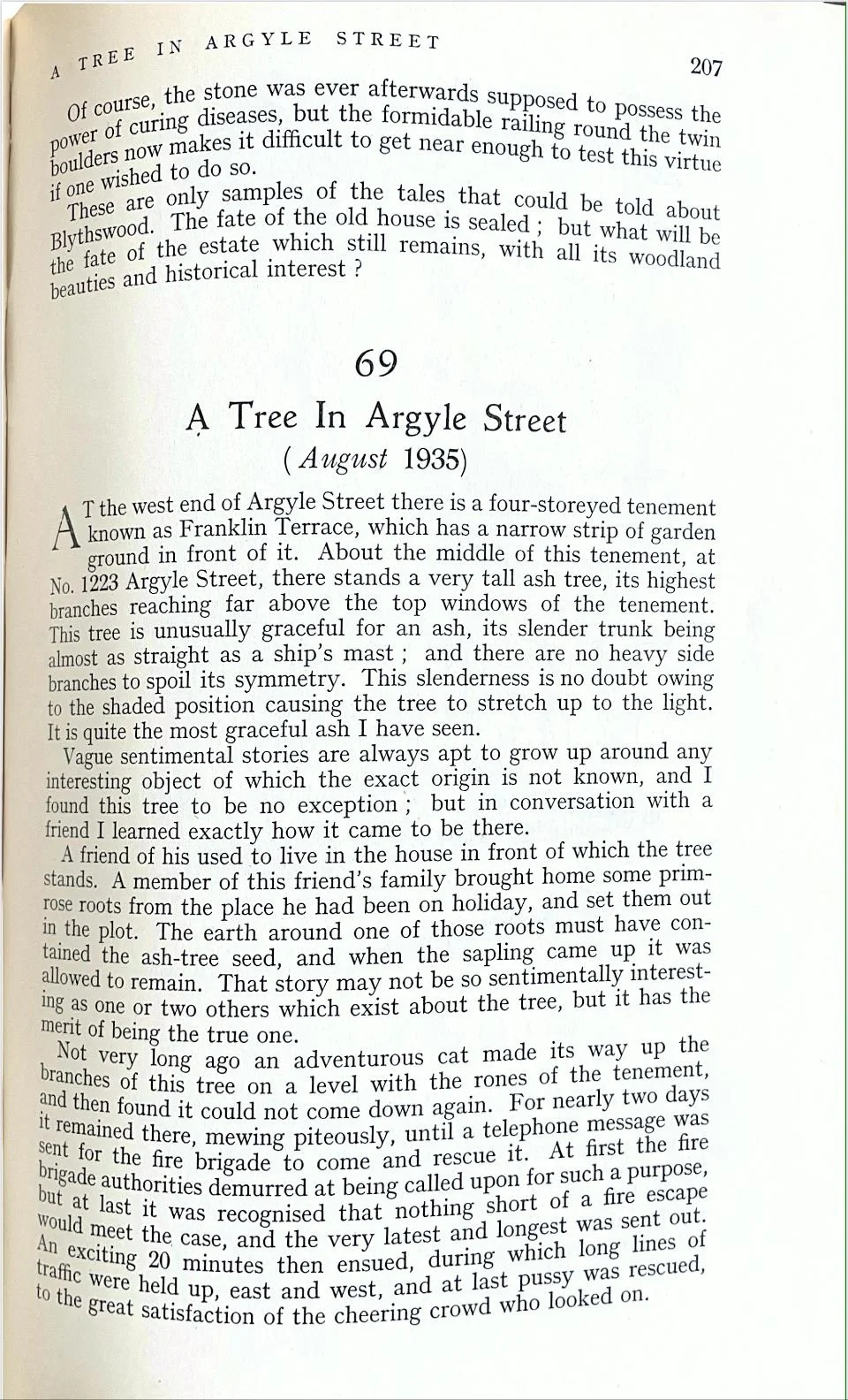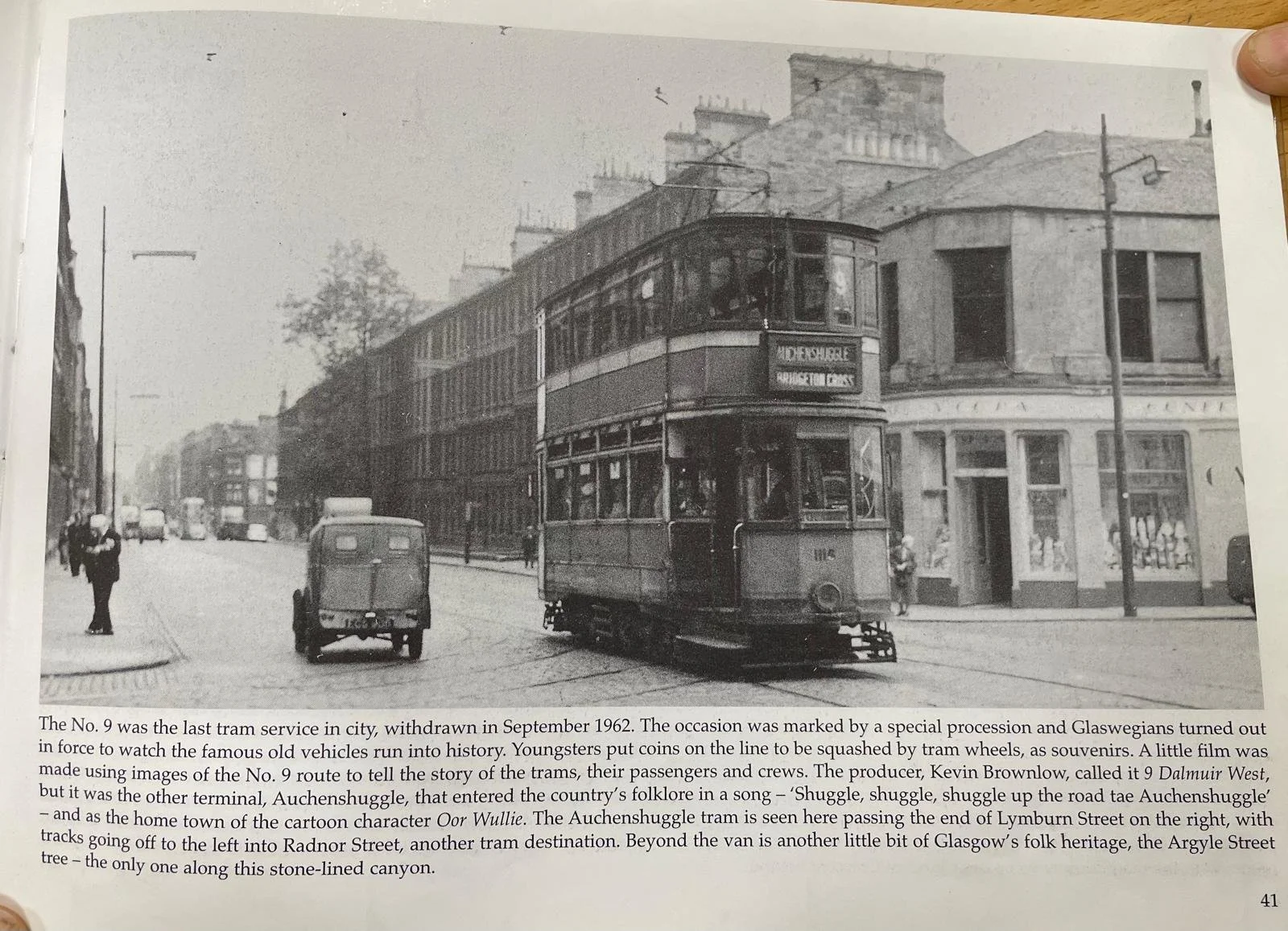In the heart of Glasgow’s busiest street stands a single ash tree — a quiet witness to over 170 years of urban change. Now, the Argyle Street Ash is shortlisted for The Woodland Trust Tree of the Year 2025 — a symbol of resilience, beauty, and survival.
Rooted in Glasgow this Tree has planted its seed in the hearts of so many of us. And now it deserves its place in the Sun.
Cast your vote to make this beautiful tree the U.K’s Tree of the Year 2025.
The Argyle Street Ash
This silent 360° drone video captures Glasgow’s most iconic street tree.
Shortlisted for U.K. Tree of the Year 2025

A tree worth knowing - scroll down to learn the story
The First Chronicle: James Cowan’s Ash Tree Essay, 1935
📖 Front Cover of “From Glasgow’s Treasure Chest” Published in 1951
“This tree is unusually graceful for an ash…
It is quite the most graceful ash I have seen.”
– James Cowan, 1935
In 1935, writer and historian James Cowan captured the story of the Argyle Street Ash in his beloved book From Glasgow’s Treasure Chest. In his short essay “A Tree in Argyle Street,” Cowan reflects on the unlikely origins and graceful beauty of the tree — already a mature landmark even then.
His writing marks the first known published account of the tree’s existence — nearly a century ago. His words remain as striking today as they were then.
📖 Page 207 – “A Tree in Argyle Street” (1935)
In 1935, writer James Cowan described the Argyle Street Ash as “almost as straight as a ship’s mast”, noting its symmetry, grace and unusual height for a city tree.
He relays a touching oral history — that a sapling grew by accident when a local family returned from holiday with primrose roots, one of which contained the ash seed.
Cowan’s account is the earliest known published story about the tree and shows that even nearly a century ago, it was already a striking presence and source of local pride.
🖋️ Page 208 – Sketch by Stuart Johnston
This beautiful sketch by artist Stuart Johnston accompanied Cowan’s essay.
He shows the tree as it stood in front of Franklin Terrace — already tall, full-canopied and unmistakably alone.
Cowan estimates the tree was around 75 feet tall in 1935, and likely seeded around 1860, just after the tenement was built. His hope? That it would live another 75 years.
It has — and more.

The Argyle Street Ash Through Time
📸 Image 1 – “The only tree in Argyle Street” – 1952
Published on 5 May 1952 in the Evening News, this rare photo captures the Argyle Street Ash as Glasgow balanced the old and the new — with a tram pulling away and a double-decker bus approaching. Already decades old, the tree stands alone in front of Franklin Terrace, silently witnessing the city's shifting pace.
This image was uncovered in the Mitchell Library archives under Anderston, though today the tree's location falls just within the boundary of Finnieston — a reminder that places change, even when the tree remains.
📸 Image 2 – Glasgow’s Last Tram (1962)
This image captures a historic turning point: Glasgow’s final tram — a No. 9 from Dalmuir to Auchenshuggle — makes its last journey down Argyle Street. Just visible beyond the van, the Argyle Street Ash stands as a quiet witness to the end of a transport era.
While the tram tracks would soon be pulled up, the tree remained rooted — steady through the shifting currents of civic change.
📸 Image 3 – “Ash Tree Saved” Clipping
In this clipping from the February 8th edition of the Partick and Marshall Advertiser, Glasgow City Council confirms that the Argyle Street Ash will be preserved — describing it as a well-known feature thought to be over 120 years old.
What the article doesn’t say is even more remarkable: in 1980, this tree was designated Tree Preservation Order Number One by the Council — the very first T.P.O. on record.
Nearly 50 years ago, Glasgow recognised that even a single tree could hold cultural, civic, and ecological significance. Long before Tree of the Year campaigns, this city led the way in protecting what mattered — one tree at a time.

A Tree Defying the Odds: Ash Dieback and Urban Resilience
In recent years, ash trees across the UK have been decimated by a fungal disease called Hymenoscyphus fraxineus — better known as ash dieback.
But this tree, rooted in the heart of Glasgow’s concrete landscape, is telling a different story.
Despite harsh urban conditions and its isolated location, the Argyle Street Ash shows no significant dieback symptoms. After years of close observation, it appears to be resisting the disease that has brought down millions of others.
Some researchers believe that urban stressors — pollution, drought, hard surfaces — may, paradoxically, select for the most resilient individuals. This tree might be living proof.
📰 Read more: The Argyle Street Ash: A Living Counter-Narrative to Ash Dieback - The Scotsman
Seen from Above
"Still, green, and thriving — in one of the busiest, harshest microclimates of the city."
🧪 How Do We Know It’s Healthy?
In the UK, ash trees affected by dieback are often assessed using a four-stage model that tracks their visible decline — from early thinning to complete canopy failure.
This tree, despite years of monitoring, shows no signs of advanced decline. It would be classed as Stage 1 — 100%-76% remaining canopy, meaning it remains functionally healthy.

Give This Tree Its
Place in the Sun
For nearly 170 years, the Argyle Street Ash has stood quietly among stone and smoke, traffic and change — a witness, a survivor, a symbol.
Now, in Glasgow’s 850th year, we have the chance to honour it.
The Argyle Street Ash has been shortlisted for Tree of the Year 2025 by the Woodland Trust.
But its future — and its recognition — depends on public votes.
Where to Find the Argyle Street Ash
The tree stands proudly in front of Franklin Terrace on Argyle Street, Glasgow — right where Anderston meets Finnieston.
You can spot it opposite the Lidl car park, next to the old tenement building that has sheltered it for generations.
If you're nearby, take a walk past. Stand beneath it. Listen. You’re looking at one of the most remarkable trees in the UK.







